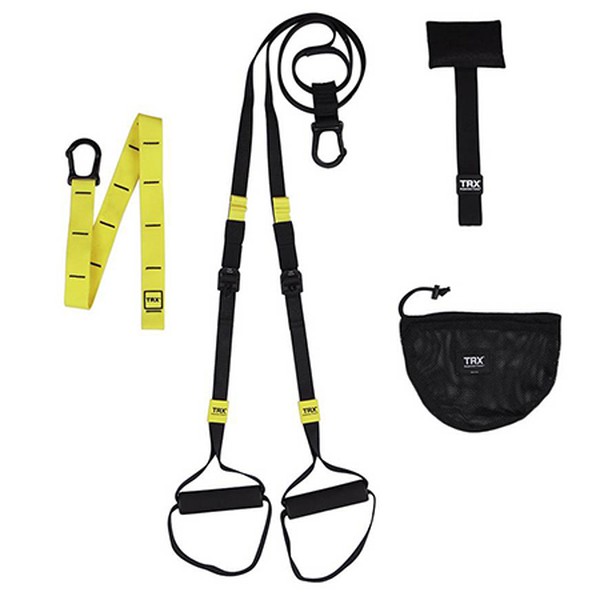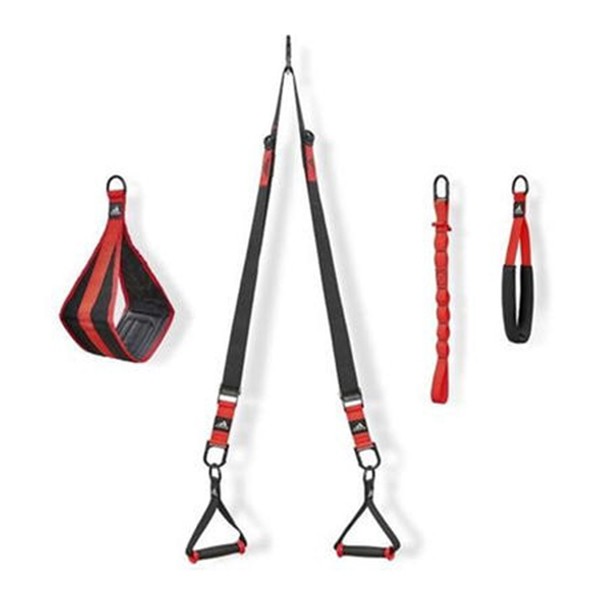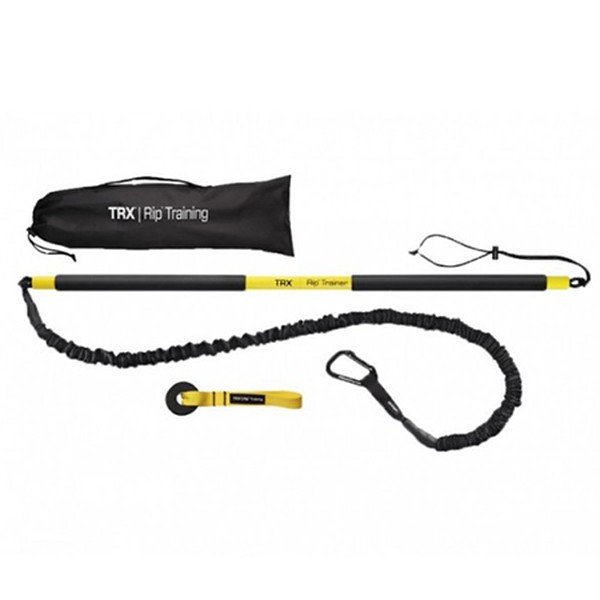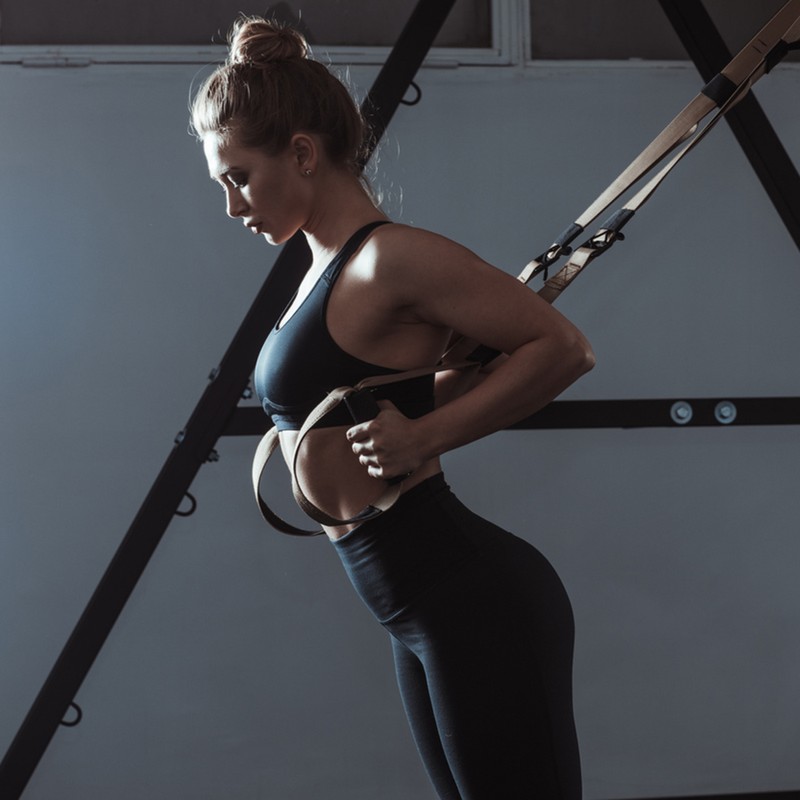The Beginner’s Guide To TRX
Firstly – what exactly is TRX?
TRX – also known as total resistance exercise – is a form of suspension training. You may have seen the distinctive yellow and black straps at your local gym or spied people using it on Instagram – the idea being to ‘hang’ from the straps, or anchor the handles to hands and feet to carry out various bodyweight moves. Like a supercharged resistance band, TRX ropes are easily portable, making them a great piece of take-anywhere fitness kit.
Why should you do it?
Where traditional training works one muscle at a time, TRX training works multiple muscles and joints simultaneously as it relies on your own bodyweight and gravity for power. In short, it provides a killer workout, says Hannah Lanel, founder of The Fore. “TRX builds more than just muscles – it helps you develop strength, balance, flexibility and core stability simply by using your own body as resistance. Take, for example, the standard push-up – when you use a TRX with this, your centre of gravity is off, leaving you no choice but to engage your core, back, hips and shoulders to stabilise yourself. By using a TRX, you’re making your move a thousand times more dynamic and effective,” she explains.
Will it boost fitness levels too?
Absolutely – the TRX provides a strength and cardio workout in one. “Using multiple muscle groups at the same time requires increased oxygen, meaning your heart rate will rise, essentially boosting your cardiovascular fitness,” Hannah says. Science agrees – research shows incorporating TRX training into an eight-week fitness programme can significantly decrease waist circumference, body fat percentage, and blood pressure.
How quickly will you see results?
Commit to two or three TRX sessions a week for a month and you’ll soon reap the benefits. “Like any form of exercise, results take time,” explains Core Collective trainer Paddy Colman. “Consistency is key and one should expect to see an improvement in strength and performance within a four-week period.”
Who’s it for?
Everyone and anyone. “If you’re looking to get into strength training, TRX is a great place to start as it’s not as intimidating as a set of dumbbells. It’s easy to adjust the resistance of any given move by simply taking a step back or forward. TRX really is for everyone – people who like yoga and Pilates tend to gravitate towards it as there are so many similarities, while runners find it a great way to build endurance. No matter your fitness level, there’s no other workout where you can so easily adapt the movements to make them more challenging, or scale them back to be a little easier.”
Okay. How should you get started?
If you are looking to invest in some kit, the first thing to remember is that your apparatus must be anchored to something, whether that’s a door, tree or ceiling, before trusting its straps with your bodyweight, says Hannah. “You can buy accessories to make this easier, including a wall mount, which screws into the ceiling or wall. If you aren’t able to hang a TRX from your ceiling, look for the TRX Home System, which comes with a door anchor.” Looking to take your TRX outside? For the best results, look for a space in your garden or local park which measures roughly eight feet long by six feet wide and use an anchor point that’s around seven to nine feet off the ground and strong enough to support your bodyweight – goal posts, trees and poles are a great place to start.
What are some basic moves?
As with any new workout routine, make sure to nail the fundamentals before attempting any complicated moves. “The plank is a great place to start,” says Hannah. “Not only will the added element of suspension supercharge the move, but from there you can progress into other variations such as a pike and mountain climbers. Squats and lunges are also a fool-proof TRX move for beginners.” The following exercises are also worth a try – for a complete workout, complete 12 to 15 reps of each exercise, and repeat three to five times, depending on your fitness level.
Lateral Lunge
TARGETS: Glutes, squads and calf muscles
HOW TO: Place your TRX in ‘single-handle’ mode by looping the foot cradle of one strap into the other; from a standing position, place your right foot in the cradle. Maintaining a tall position, take one step to the left of the anchor point and bend your left knee as you lower into a squat. Drive through your heel to return to the starting point. Repeat for eight reps and then do the same on the other leg.
Hamstring Curl
TARGETS: Hamstrings and back of the legs
HOW TO: With the straps at mid-calf length, lie on your back facing the anchor point (where your TRX is secured) and place your heels in the foot cradles. Keeping even pressure in your heels, engage your glutes and core and lift your hips, dragging your heels until your knees are stacked over your hips. Return your legs to a straight position while bracing the core and repeat.
Low Row
TARGETS: Back muscles
HOW TO: With the suspension trainer shortened, stand facing the anchor point. Begin with your elbows bent at 90 degrees, the handles at your ribs and your body straight. Slowly straighten your arms to lower your body, staying in a straight line. Return to the starting position by bending the elbows.
Squat
TARGETS: Improves hip mobility and strengthens lower body.
HOW TO: Adjust the TRX straps to mid-length, and stand facing the anchor point. Hold the handles in front of you and step back until there is a slight tension on the straps. Without leaning back, lower your hips down, before squeezing the glutes as you return to standing. If you are feeling strong, try a squat jump, adding speed as you go.
Chest Press
TARGETS: Core and upper body
HOW TO: Fully lengthen your TRX straps and stand facing away from the anchor point. Start on the balls of your feet and with your arms extended directly below your shoulders, pushing against the handles of the straps. Keeping your body in a straight plank, lower yourself until your elbows are at 90 degrees. Straighten the arms and brace your core as you return to the starting position.
Anything else?
If you’re just starting out on your TRX journey, don’t be afraid to go at your own pace. A few good reps in each exercise are better than fast and sloppy movement loaded with momentum. Take your time to focus on form and body alignment and as you get stronger, gradually add intensity. If you’re feeling inspired, look to Instagram – @thefore_london, @trxtraining, @lukewtraining, @nikoalgieri and @kirastokesfit regularly post TRX workout ideas and will get you better acquainted with your kit. The official TRX app is also well worth a download (a subscription is included when you buy a TRX) – it boasts hundreds of training videos, with every session alternating intervals with brief rest periods for 20, 30 or 40 minutes.
Shop our pick of TRX sets below...



DISCLAIMER: We endeavour to always credit the correct original source of every image we use. If you think a credit may be incorrect, please contact us at info@sheerluxe.com.


